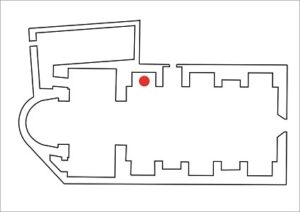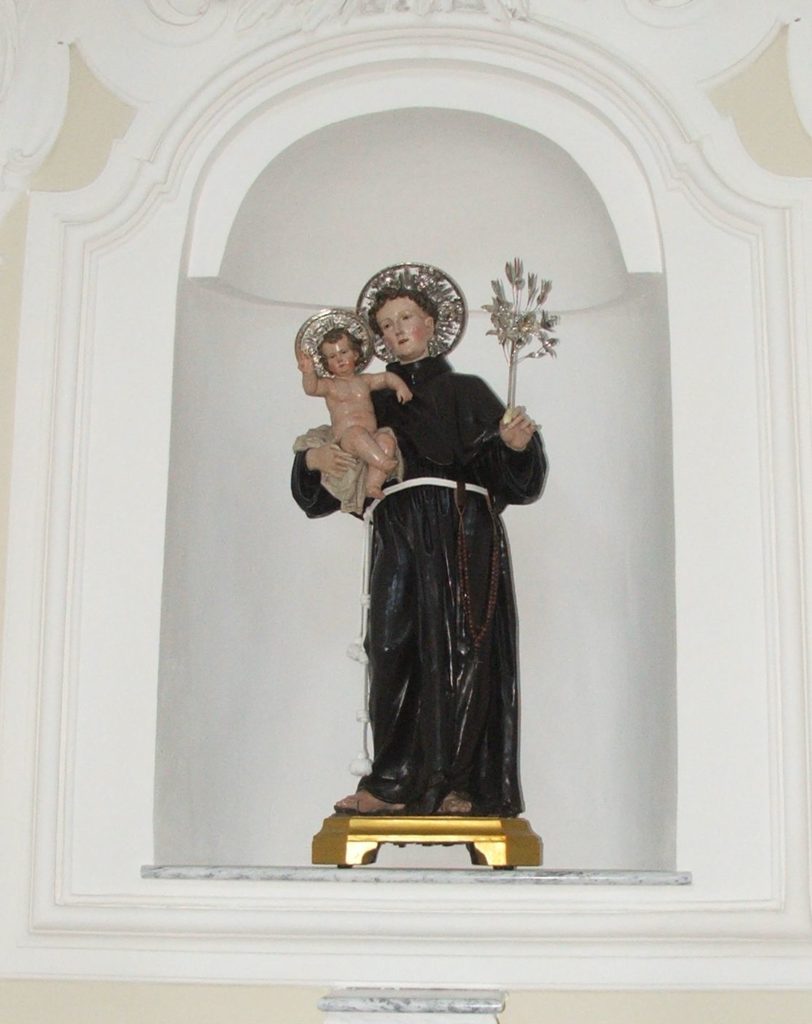Sant’Antonio da Padova


Chiesa di S. Maria Maggiore
Scultura
Sant’Antonio di Padova
Sec. XVIII (seconda metà)
Legno scolpito e dipinto
Ambito culturale napoletano

Church of S. Maria Maggiore
Sculpture
Saint Anthony of Padua
18th century (second half)
Carved and painted wood
Neapolitan cultural sphere
La scultura lignea di Sant’Antonio da Padova, si presenta secondo la consueta iconografia antoniana, nota fin dalla fine del XV secolo, ovvero quella di un frate francescano in piedi, molto giovane, con il bambino Gesù in braccio e il giglio in mano.
La scultura, come è emerso nel corso del restauro del 2007, è composta da pezzi di legno di salice e pioppo assemblati con perni e colla animale.
Il manufatto venne acquistato durante la seconda metà del XIX secolo dalla Confraternita di San Tommaso d’Aquino per decorare l’altare di Sant’Antonio da Padova nella Chiesa di San Tommaso d’Aquino.
Il detto altare, nel giugno 1886, venne elevato ad altare privilegiato con l’indulgenza plenaria per le anime del Purgatorio, da Papa Leone XIII.
Il primo restauro noto della scultura, ascrivibile all’ambito culturale napoletano, risale al 1994. Un secondo restauro, che riportò la statua all’aspetto originario, venne effettuato nel 2007. In particolare, con questo restauro vennero eliminati gli strati sovrapposti nel tempo di colore e gesso, venne consolidata l’intera struttura e vennero reintegrate le forme ed i colori originali. Un ulteriore intervento di disinfestazione dagli insetti xilofagi venne effettuato nel 2014 a cura del restauratore Luigi La Bella.
Sempre nello stesso anno, al fine di prevenire ulteriori attacchi di insetti xilofagi, salvaguardare il manufatto e favorire il culto del Santo, la scultura venne trasferita nella Chiesa di S. Maria Maggiore.
The wooden sculpture of Saint Anthony of Padua is presented according to the usual Antonian iconography, known since the end of the fifteenth century, or that of a Franciscan friar standing, very young, with the baby Jesus in his arms and the lily in his hand.
The sculpture, as it emerged during the 2007 restoration, is composed of pieces of willow and poplar wood assembled with pins and animal glue.
The artifact was purchased during the second half of the nineteenth century by the Confraternity of St. Thomas Aquinas to decorate the altar of St. Anthony of Padua in the Church of St. Thomas Aquinas.
The said altar, in June 1886, was elevated to a privileged altar with plenary indulgence for the souls of Purgatory, by Pope Leo XIII.
The first known restoration of the sculpture, attributable to the Neapolitan cultural environment, dates back to 1994. A second restoration, which brought the statue back to its original appearance, was carried out in 2007. In particular, with this restoration the overlapping layers were eliminated in the time of color and plaster, the entire structure was consolidated and the original shapes and colors were reinstated. A further disinfection intervention by xylophagous insects was carried out in 2014 by the restorer Luigi La Bella.
Also in the same year, in order to prevent further attacks of xylophagous insects, safeguard the artifact and favor the cult of the Saint, the sculpture was transferred to the Church of S. Maria Maggiore.

